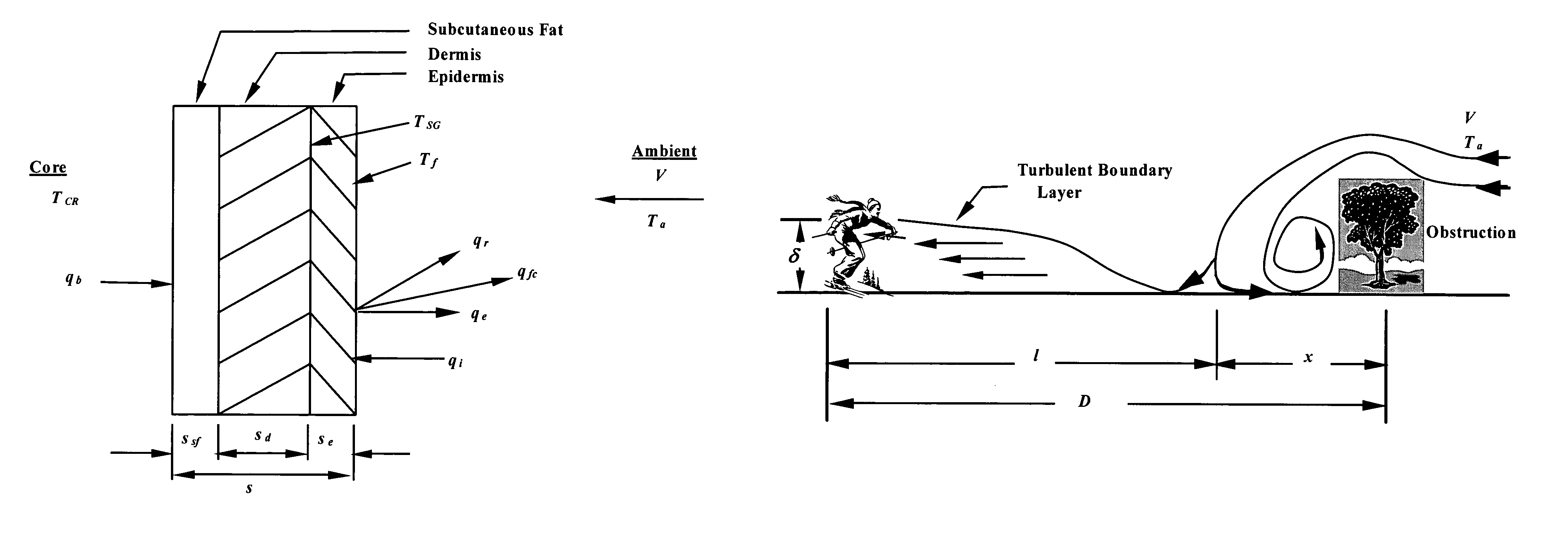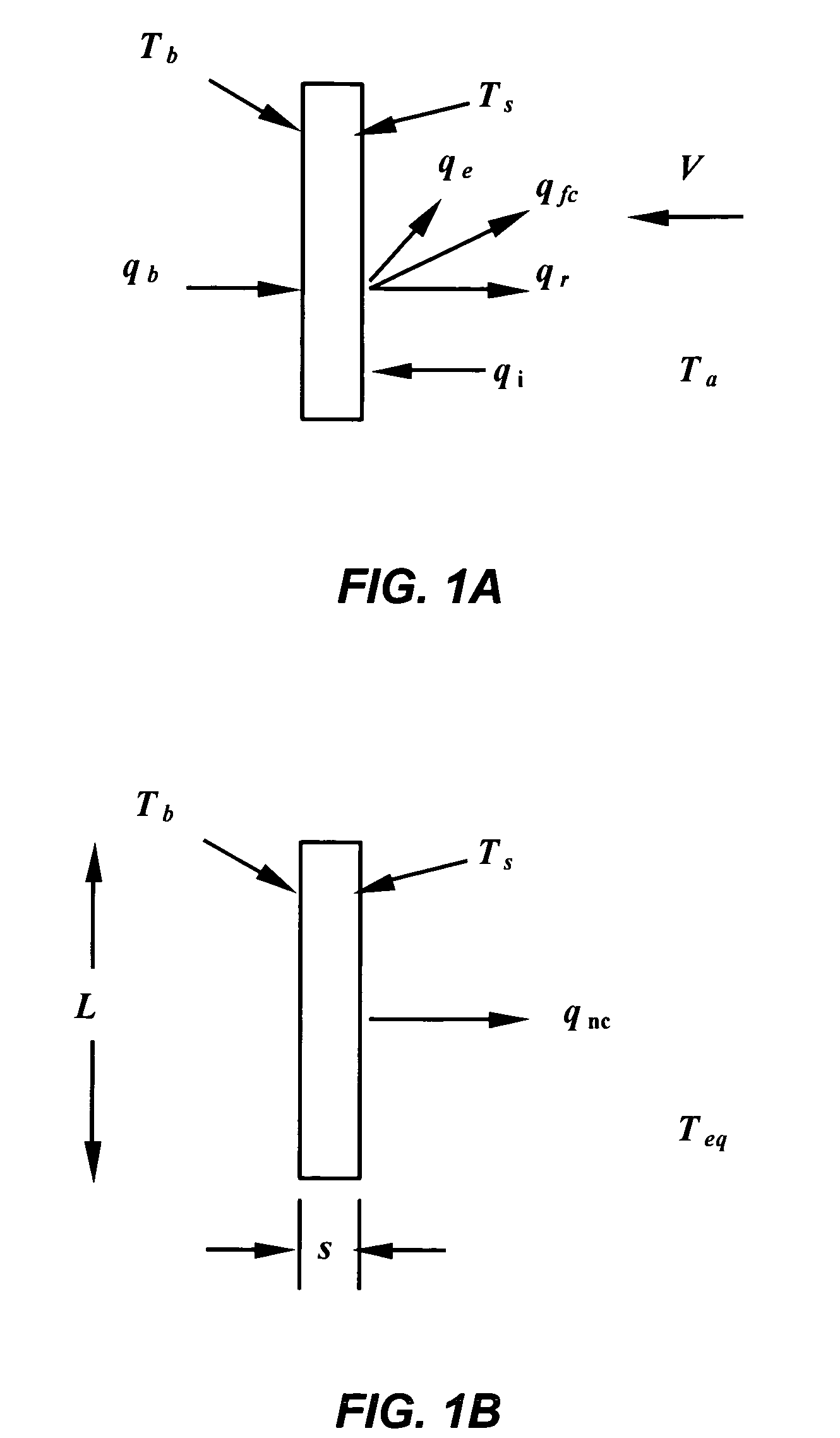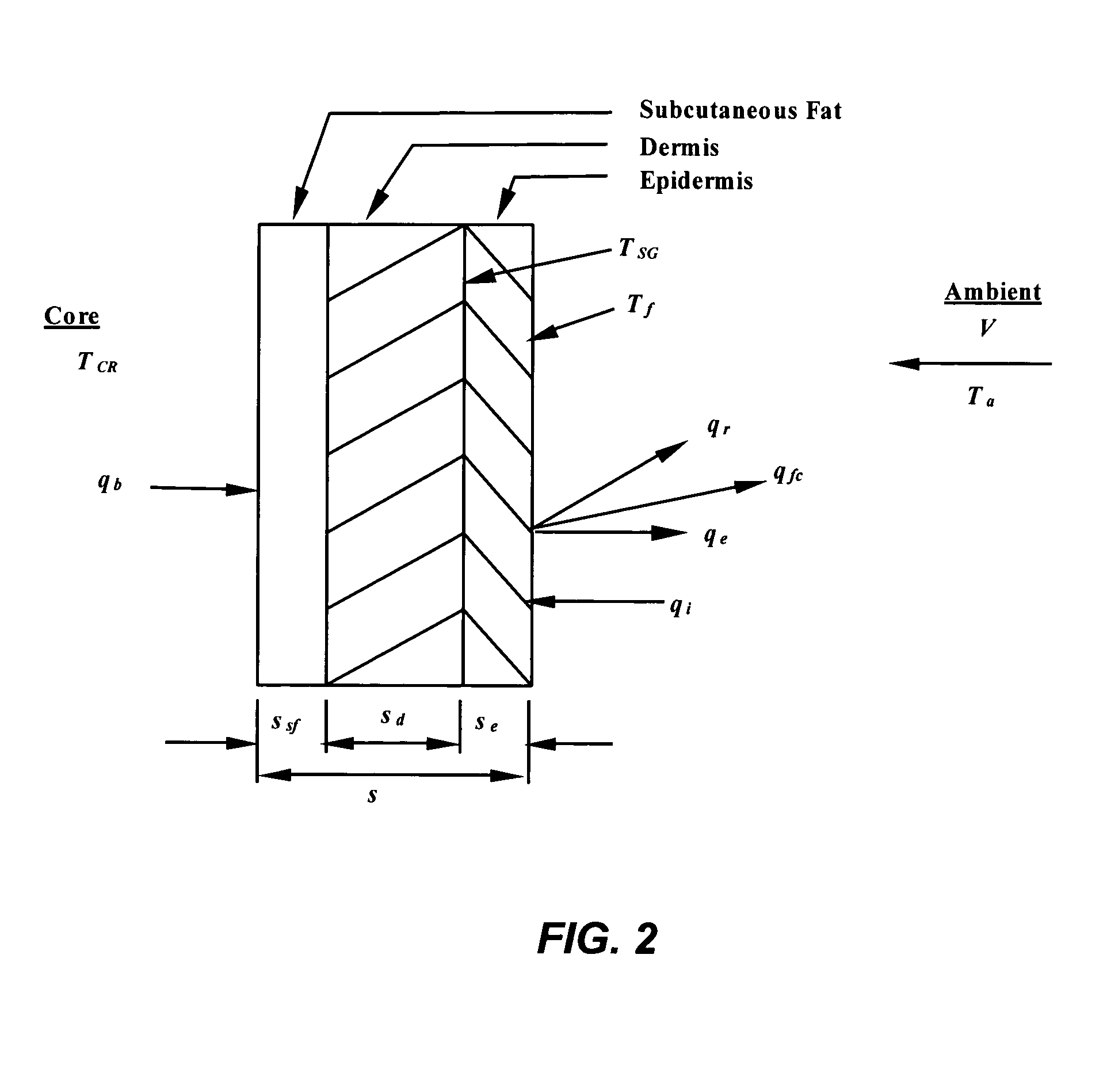Method and system for determining wind chill temperature
a technology of wind chill temperature and method, applied in the field of methods and systems for determining wind chill temperature, can solve the problems of inability to accurately determine the difference between actual and perceived temperatures, inaccurate assumption of constant skin temperature of 33° c, and inability to accurately determine the temperature of wind chill
- Summary
- Abstract
- Description
- Claims
- Application Information
AI Technical Summary
Benefits of technology
Problems solved by technology
Method used
Image
Examples
Embodiment Construction
[0056]The wind chill model disclosed herein is confined to the facial surface since the face of even a properly dressed individual will most likely be uncovered. Furthermore, the individual senses the wind chill temperature by way of the sensory nerves located within the intermediate skin layer (dermis) of the exposed facial surface and not from the surface of the clothed body. The wind chill model disclosed herein consists of an equation for the wind chill temperature and a second equation called the time to freeze. The latter defines the length of the exposure time at the wind chill temperature when facial freezing occurs. The time to freeze feature eliminates much of the controversy associated with wind chill by reducing the subjective nature of the wind chill temperature and at the same time provide a warning to the individual of a safe exposure time.
[0057]The wind chill model disclosed herein may be viewed as a complete model in that it is not restricted to the two major heat l...
PUM
 Login to View More
Login to View More Abstract
Description
Claims
Application Information
 Login to View More
Login to View More - R&D
- Intellectual Property
- Life Sciences
- Materials
- Tech Scout
- Unparalleled Data Quality
- Higher Quality Content
- 60% Fewer Hallucinations
Browse by: Latest US Patents, China's latest patents, Technical Efficacy Thesaurus, Application Domain, Technology Topic, Popular Technical Reports.
© 2025 PatSnap. All rights reserved.Legal|Privacy policy|Modern Slavery Act Transparency Statement|Sitemap|About US| Contact US: help@patsnap.com



